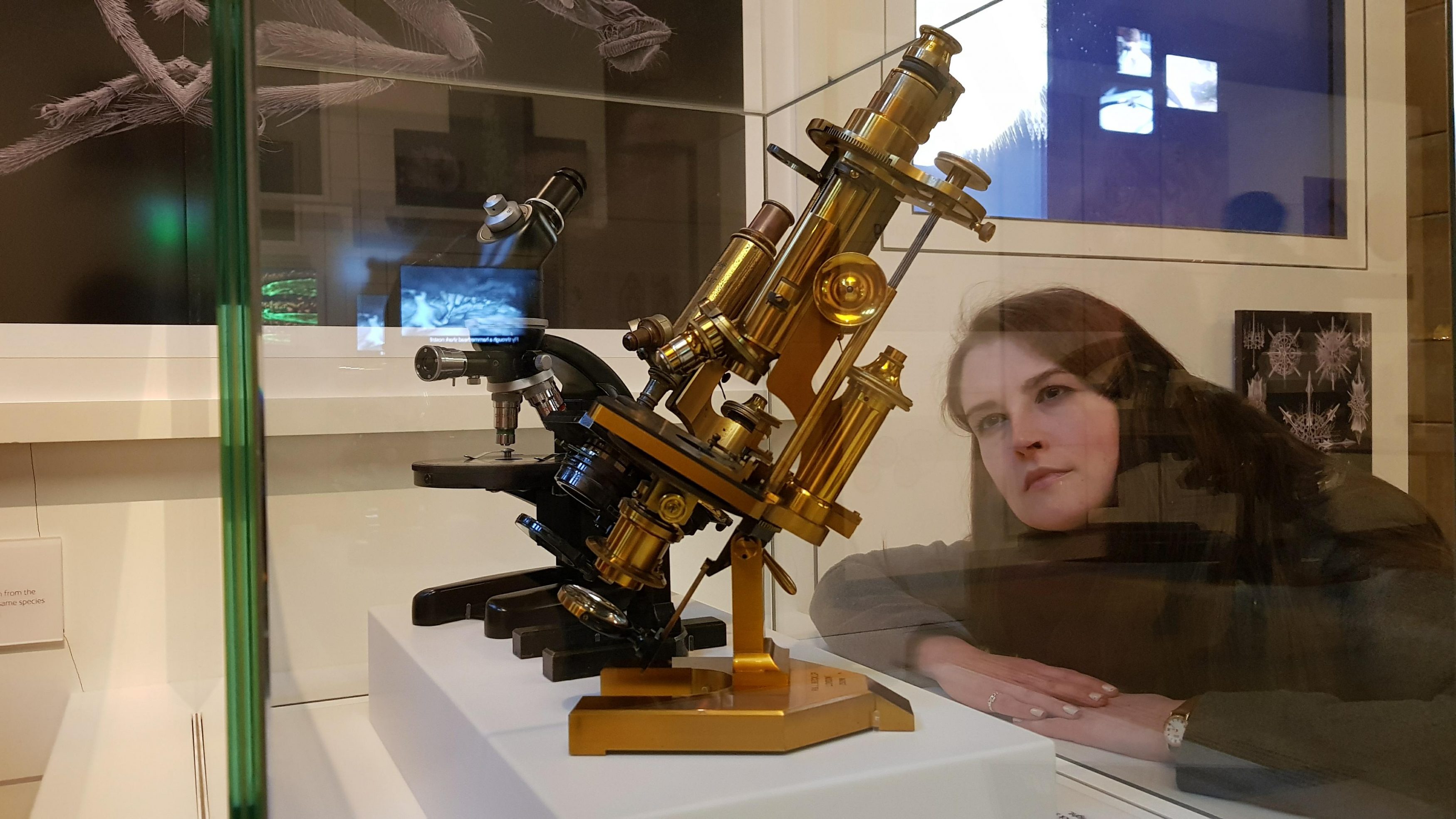As the Voyager 1 space probe was leaving our solar system, Carl Sagan asked that it be turned around to capture one last photo – a photo of Earth. This infamous image was named ‘the Pale Blue Dot’. Two days short of Sagan’s image turning 28 years old, an image of a new pale blue dot was released. The image ‘Single atom in an ion trap’ was captured by David Nadlinger, a PhD student from the University of Oxford. The image won first place in a national science photography competition run by the Engineering and Physical Sciences Research Council (EPSRC). Neither contain enough information to extract useable data from, so why are these images important?
The Carl Sagan image

The Voyager 1 probe was equipped with two cameras as part of its Imaging Science Subsystem. One was a wide-angle camera for taking low resolution images of larger areas of space. The other was a narrow-angle camera for capturing high resolution images of specific objects. It was the narrow-angle camera that captured the image of our speck of a planet in space.
The challenge for capturing the Sagan image was that, as the planet would be so far away and faint, the image would need to be long exposure. Long exposure images can have trouble with noise and blurring, as the light is being captured over a longer period of time, allowing for more artefacts. However, that single pixel of light shone bright, and we saw our home like never before.
The David Nadlinger image

Copyright David Nadlinger, University of Oxford
David Nadlinger is a physicist at the University of Oxford who studies Ion Trap Quantum Computing. Using an ion trap, researchers are able to suspend ions (charged atoms) using electromagnetic fields. This allows them to study the properties of different kinds of atoms.
While Sagans image makes the Earth look very small, Nadlingers image makes the atom look very big. Remember though, the distance between the two pins in the ion trap is only 2mm, and a strontium atom is only a few millionths of a millimetre in diameter. The wavelength of visible light is not small enough to reflect off an atom anyway. What we are seeing in the image is not the physical atom itself, but the light being emitted from the atom, as it is being excited by a blue-violet laser. Nadlinger used a regular camera on a long exposure setting to capture the image. The camera, over time, was able to detect enough of the light being emitted so that the atom appears as a tiny blue dot.
Why are these images important?
Images are powerful things in science. They appeal to both scientists and non-scientists, making the achievements and advancements of researchers accessible to all. But what is the significance of these two pale blue dots?
When the Carl Sagan image was released, it was – and still is – the furthest view of Earth we have ever captured. As Sagan said, “Look again at that dot. That’s here. That’s home. That’s us. On it everyone you love, everyone you know, everyone you ever heard of, every human being who ever was, lived out their lives. The aggregate of our joy and suffering, thousands of confident religions, ideologies, and economic doctrines, every hunter and forager, every hero and coward, every creator and destroyer of civilization, every king and peasant, every young couple in love, every mother and father, hopeful child, inventor and explorer, every teacher of morals, every corrupt politician, every “superstar,” every “supreme leader,” every saint and sinner in the history of our species lived there–on a mote of dust suspended in a sunbeam.”
The Sagan image reminds us how very small we are, and how lucky. The light captured in Sagans Pale Blue Dot is actually the light from the sun reflecting off the planet. Without that light we would just be another bit of dust in the universe, blending into the vast darkness. It puts a lot in perspective.
The Nadlinger image shows us how far we have come. While the theory of atoms dates back to 400BC, atomic science only came to the fore in the 1800’s. So, in 200 years, we have gone from theorising about atoms, to making eye contact with them. The speed at which we are advancing technology is startling and Nadlingers image is a symbol for that. What will we have achieved in another 200 years?
The first satellite was sent into space in 1957 (Sputnik 1 and 2 by the Soviet Union) and within 20 years we had a machine capable of leaving the solar system. Voyager 1 launched in 1977 and amazingly, it is still going and still communicating with Earth. You can follow Voyager 1 and 2 on https://voyager.jpl.nasa.gov/ where you can follow how far it currently is from Earth and the Sun, and also look through the gallery of images the two crafts have captured.
Both images are testament to human endeavour and show us what we are truly capable of. But of course, what will be the point if we don’t take care of the little blue dot we live on?



